Does anyone know how to put a JCheckBox in a JTable column? Something like this:

I took this from How To use Tables
Thanks in advance.
Does anyone know how to put a JCheckBox in a JTable column? Something like this:

I took this from How To use Tables
Thanks in advance.
1) JTable knows JCheckbox with built-in Boolean TableCellRenderers and TableCellEditor by default, then there is contraproductive declare something about that,
2) AbstractTableModel should be useful, where is in the JTable required to reduce/restrict/change nested and inherits methods by default implemented in the DefaultTableModel,
3) consider using DefaultTableModel, (if you are not sure about how to works) instead of AbstractTableModel,

could be generated from simple code:
import javax.swing.*;
import javax.swing.table.*;
public class TableCheckBox extends JFrame {
private static final long serialVersionUID = 1L;
private JTable table;
public TableCheckBox() {
Object[] columnNames = {"Type", "Company", "Shares", "Price", "Boolean"};
Object[][] data = {
{"Buy", "IBM", new Integer(1000), new Double(80.50), false},
{"Sell", "MicroSoft", new Integer(2000), new Double(6.25), true},
{"Sell", "Apple", new Integer(3000), new Double(7.35), true},
{"Buy", "Nortel", new Integer(4000), new Double(20.00), false}
};
DefaultTableModel model = new DefaultTableModel(data, columnNames);
table = new JTable(model) {
private static final long serialVersionUID = 1L;
/*@Override
public Class getColumnClass(int column) {
return getValueAt(0, column).getClass();
}*/
@Override
public Class getColumnClass(int column) {
switch (column) {
case 0:
return String.class;
case 1:
return String.class;
case 2:
return Integer.class;
case 3:
return Double.class;
default:
return Boolean.class;
}
}
};
table.setPreferredScrollableViewportSize(table.getPreferredSize());
JScrollPane scrollPane = new JScrollPane(table);
getContentPane().add(scrollPane);
}
public static void main(String[] args) {
SwingUtilities.invokeLater(new Runnable() {
@Override
public void run() {
TableCheckBox frame = new TableCheckBox();
frame.setDefaultCloseOperation(EXIT_ON_CLOSE);
frame.pack();
frame.setLocation(150, 150);
frame.setVisible(true);
}
});
}
}